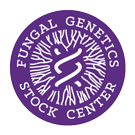Strain: Neurospora crassa
FGSC #8271
Reporting Genes: nic-1; mcm; inv
Species: crassa
Allele: 39113; RM124-2; no#
Alternate Strain Number: A44-32
Depositor: RM
Linkage Group: IIL; VR; IR
Mating Type: a
Genes

Reporting Genes: nic-1; mcm; inv
Species: crassa
Allele: 39113; RM124-2; no#
Alternate Strain Number: A44-32
Depositor: RM
Linkage Group: IIL; VR; IR
Mating Type: a
